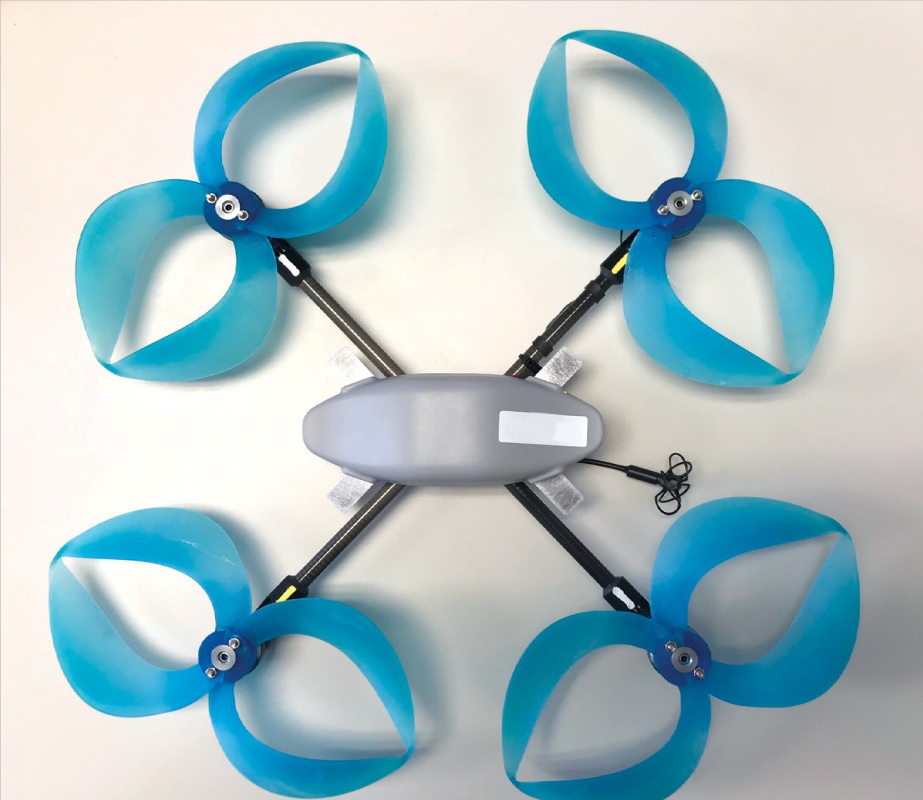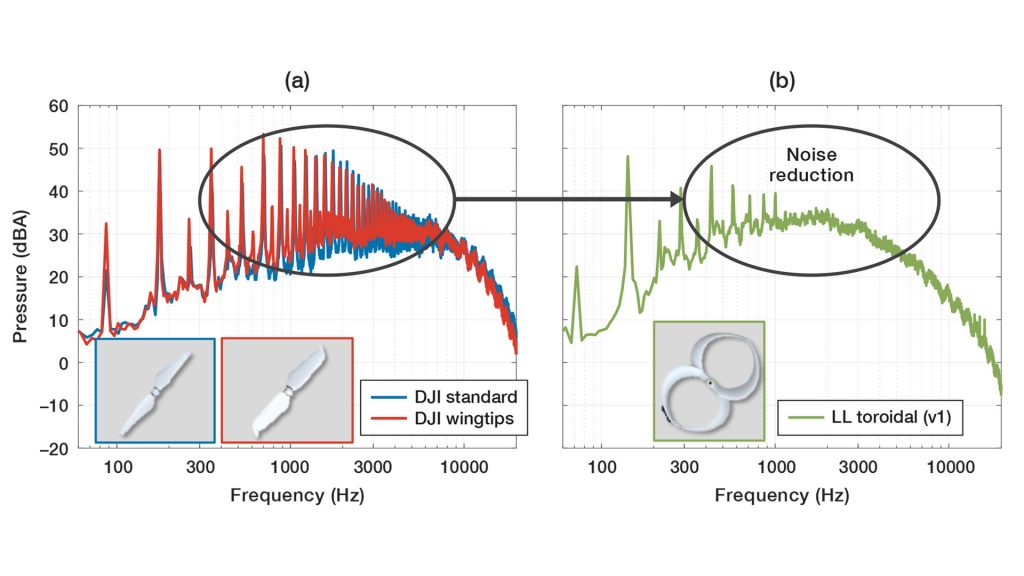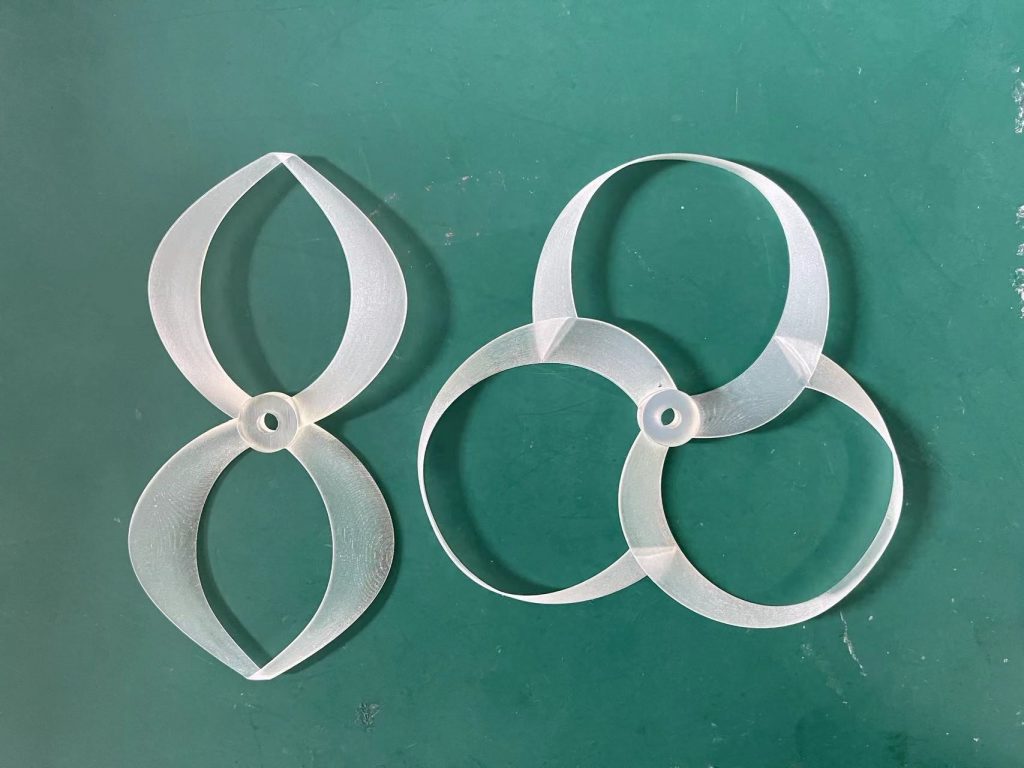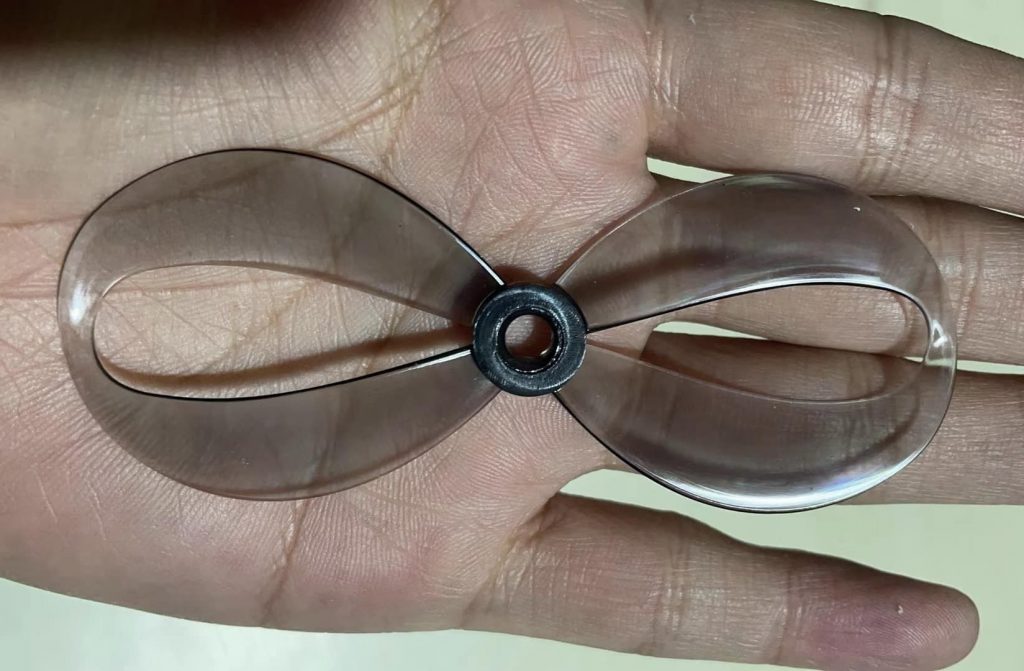Toroidal propellers
MIT researchers have developed a revolutionary new toroidal propeller design that promises to significantly reduce noise levels compared to traditional propellers. The toroidal design features a ring-shaped blade that encircles the propeller, which helps to suppress the noise generated by the propeller’s rotating blades. This new design has the potential to be particularly useful in areas where noise pollution is a concern, such as urban environments or near residential areas.

The MIT Solution – the toroidal propeller consists of two blades looping together so that the tip of one blade curves back into the other. This closed-form structure minimizes the drag effects of swirling air tunnels (i.e., vortices) created at the tips of blades and strengthens the overall stiffness of the propeller. These features reduce the propeller’s acoustic signature.

shows the significant reduction of discernible noise achieved by the toroidal propeller.
However, while the toroidal propellers may be quieter, there are questions about their efficiency. The MIT team notes that toroidal propeller achieves thrust “comparable” to that of a multirotor drone propeller, but the community is debating whether this design could potentially reduce the propeller’s thrust and increase drag, which could impact its overall efficiency. Further testing will be needed to determine the tradeoffs between noise reduction and efficiency for this innovative new design.
Gemfan and HQProps are already working on their toroidal propeller design. They are currently in the testing phase of their implementations.


Overall, the toroidal propeller design represents an exciting new development in the field of propeller design and has the potential to be a game-changer for certain applications where noise reduction is a top priority.

If you would like to read more about these new toroidal propellers, check out the original original publication from the researchers at MIT.


The latest of what Striking FPV has created looks better than Gemfans’ prototypes.
HQ looks interesting.
We’ll see…
None of those 3D printed props hold strong and none of them are near effective as our regular FPV props. But the smart guys at Gemfan, HQProp and other manufacturers might come with some interesting solution. Interesting times! It’s like reinventing the wheel… or not. 🙂